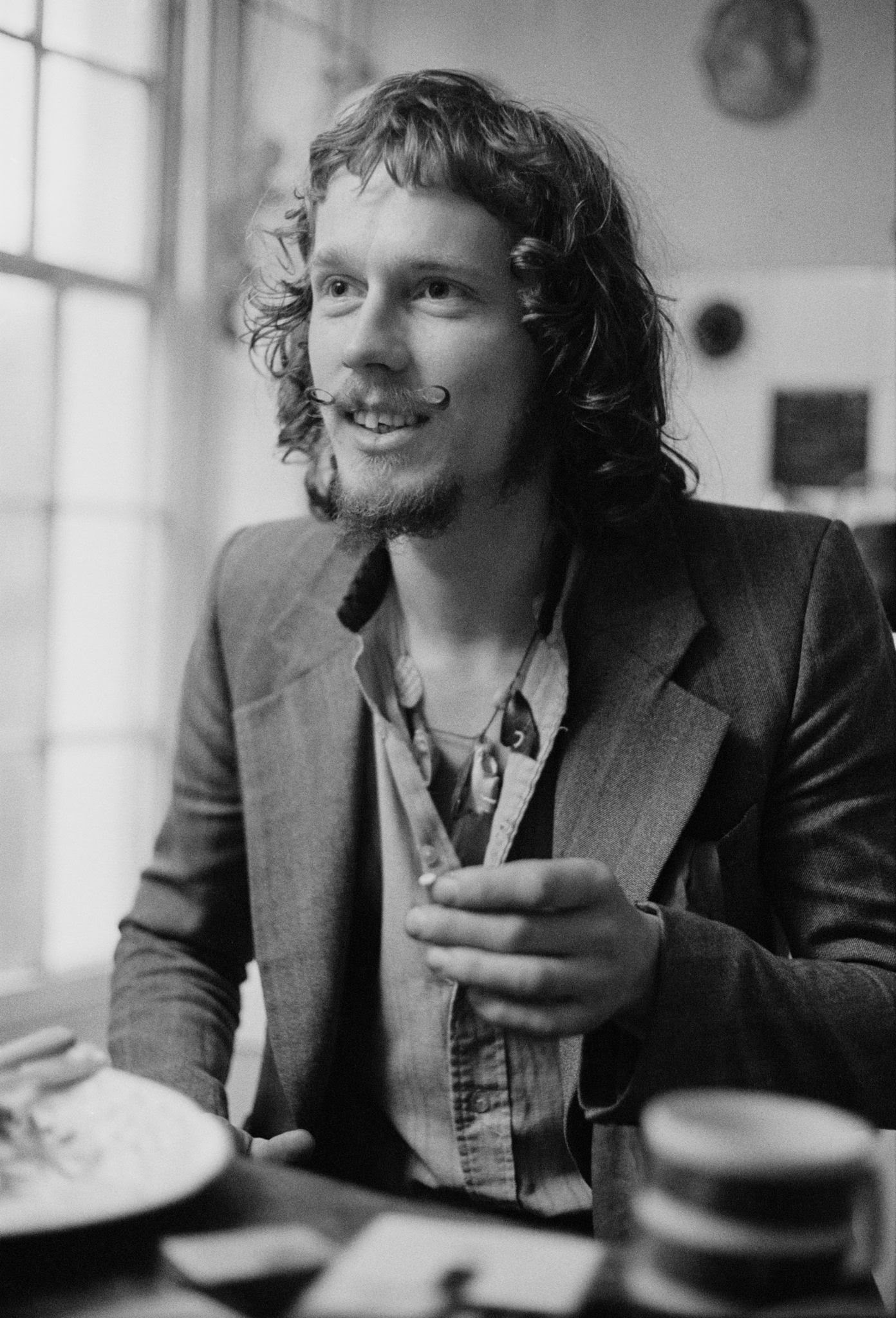Jamie Muir was never just a drummer. He was a force, a sonic experimenter, a musician who saw rhythm as something far beyond mere beats and time signatures. With his passing at the age of 82, the world loses a truly singular artist—one who never played by the rules and never seemed particularly interested in staying in one place for long.

For many, the name of Jamie Muir is forever linked to King Crimson, the band where he left his most visible mark. But even in that world of musical risk-taking, he stood apart. His brief time with Crimson in the early ‘70s was defined by an unpredictable, almost chaotic approach to percussion. He didn’t just play drums—he orchestrated sound, striking sheet metal, chains, bells, and even himself. Performances felt less like concerts and more like abstract theater, with Muir at the center, smeared in paint, lost in the primal energy of the moment.
It was this raw intensity that made Larks’ Tongues in Aspic one of King Crimson’s most adventurous records. Muir’s presence on the album was like a burst of wild, untamed energy, pushing Robert Fripp and the rest of the band into new sonic territory. But just as quickly as he arrived, he was gone. Before the band could even properly tour the album, Muir walked away from it all, disappearing into a world of spiritual pursuits and artistic solitude.
Unlike many who leave the spotlight only to return, Muir never looked back. He abandoned the music industry entirely, immersing himself in Buddhism and the quiet discipline of painting. His retreat wasn’t a bitter departure but a deliberate shedding of the expectations that come with fame. He had always been more interested in exploring the unknown than repeating what had already been done.
Even in absence, his influence never faded. Drummers and experimental musicians continued to cite his fearless approach to percussion, his willingness to treat rhythm as something living, unpredictable, and free. King Crimson moved forward without him, but Larks’ Tongues in Aspic remains a testament to what he brought to the band—a moment in time where rock music felt like it could be anything.
Muir’s life was never about staying in one place, whether musically, spiritually, or physically. He followed an internal rhythm that few could understand but many admired. In his passing, he leaves behind not just an album or a legacy, but a reminder that art is meant to be unpredictable, untamed, and, above all, true to itself.
